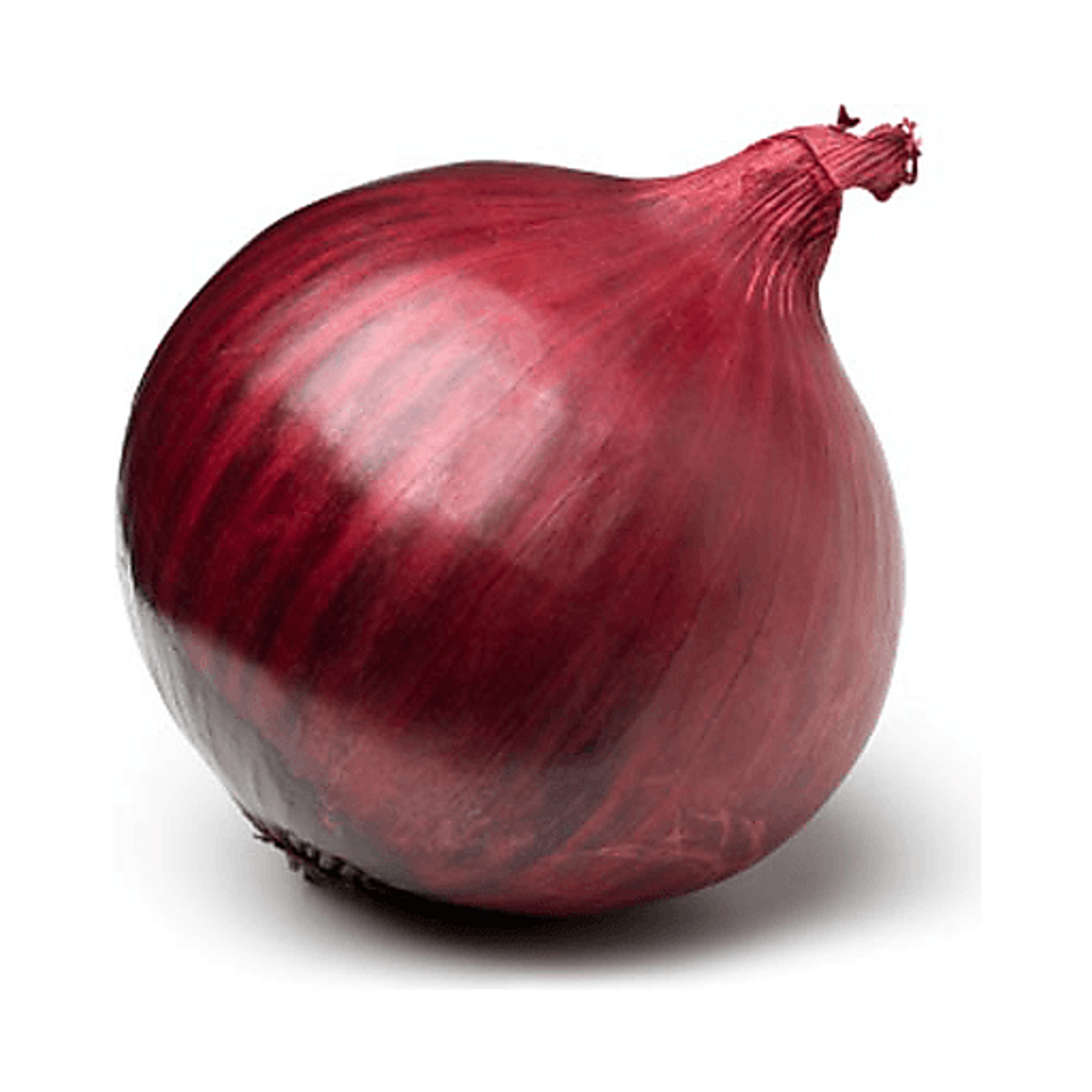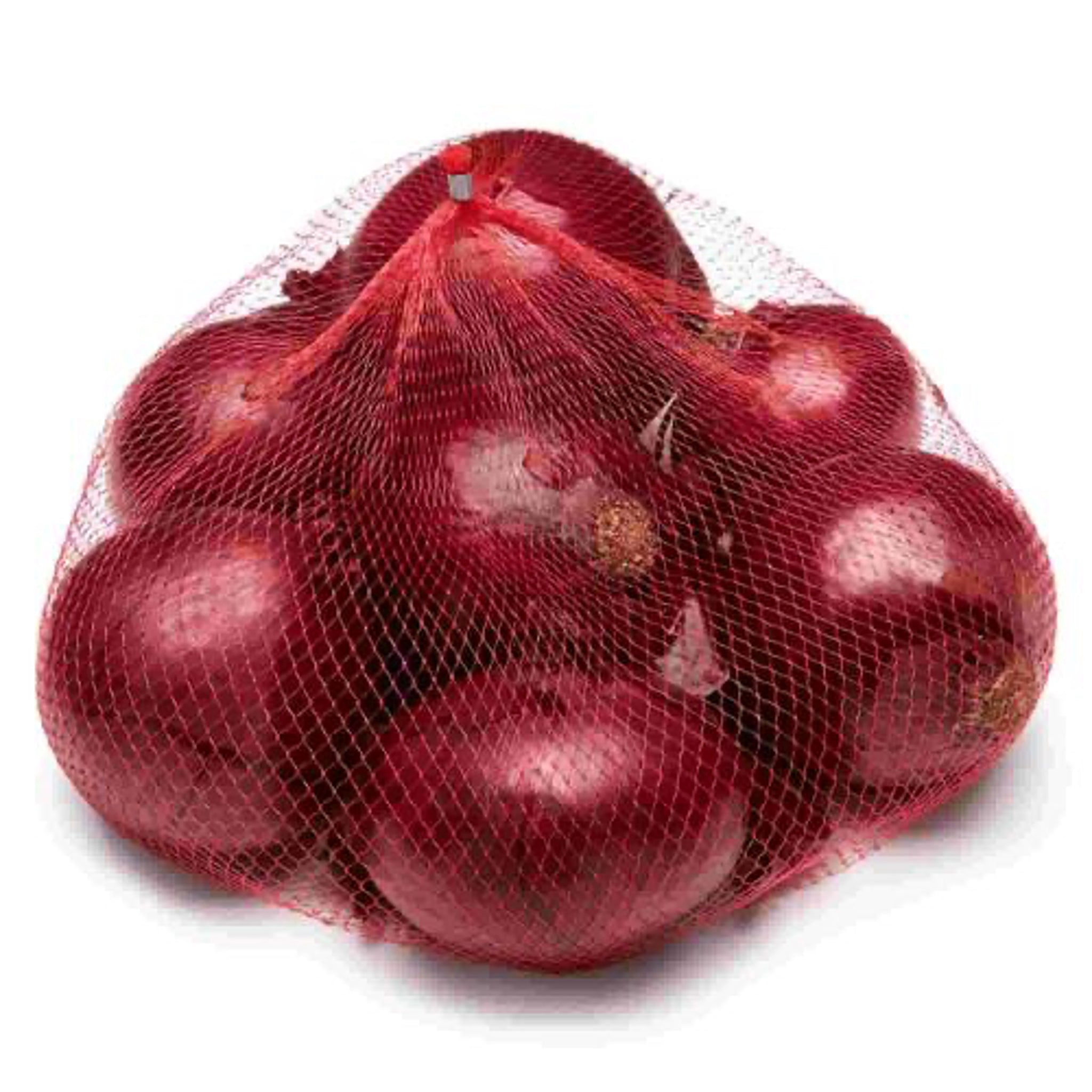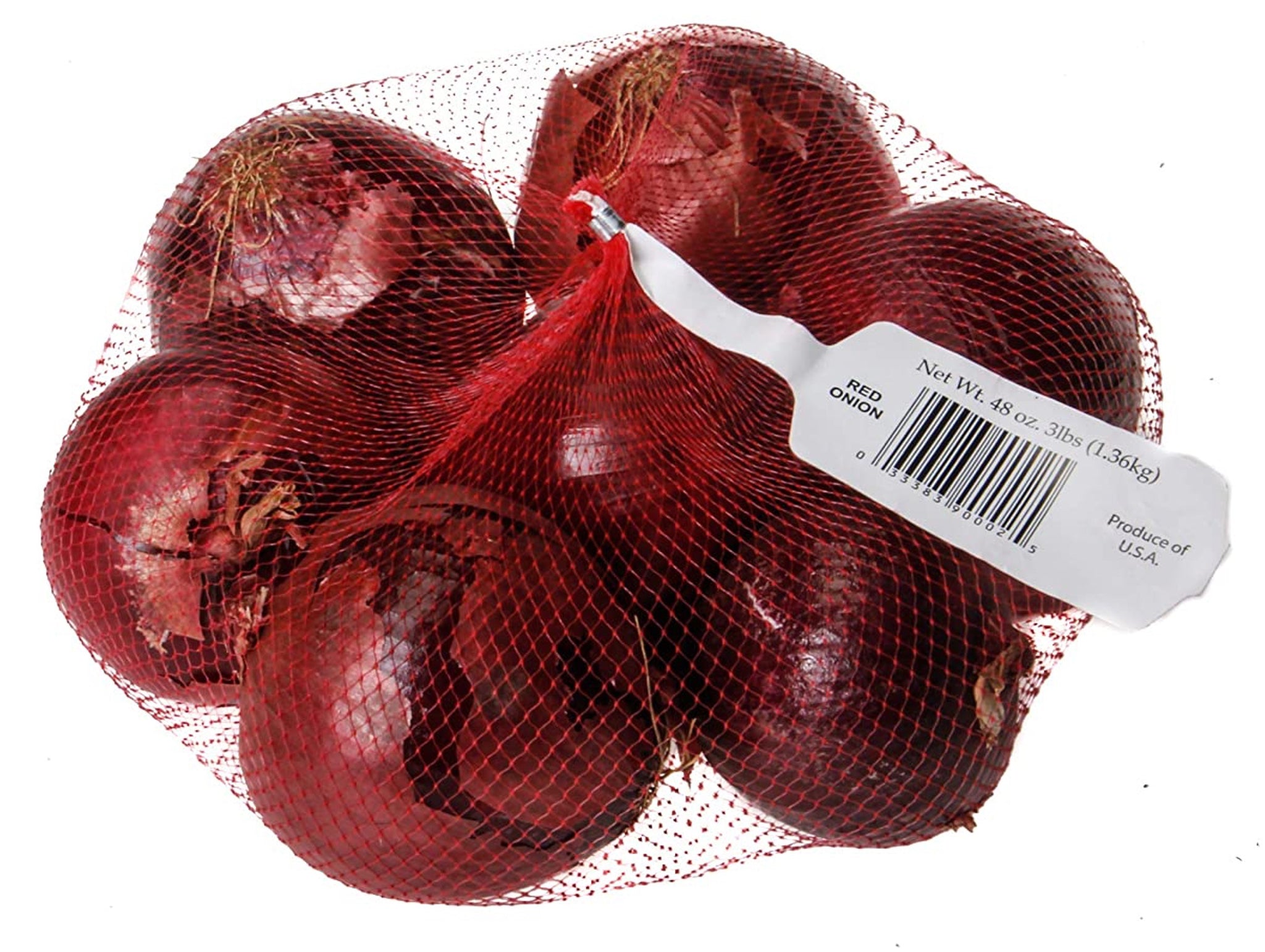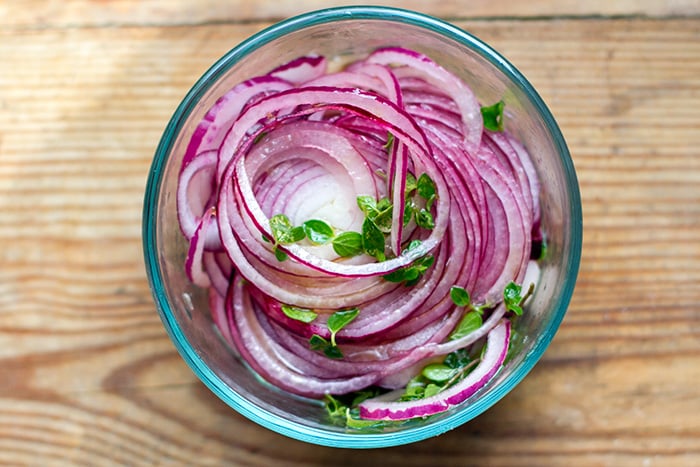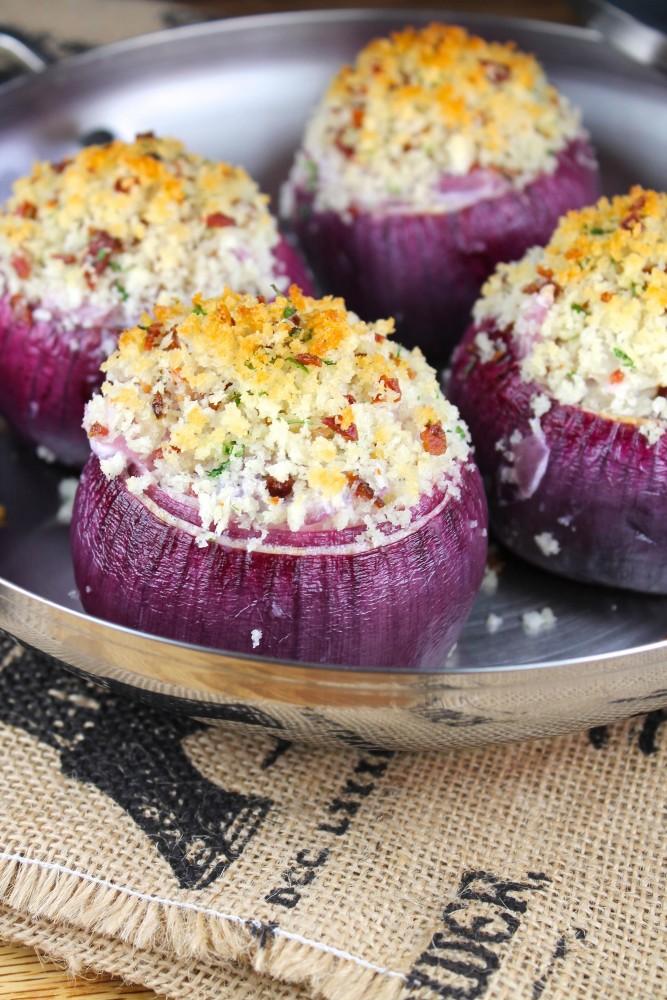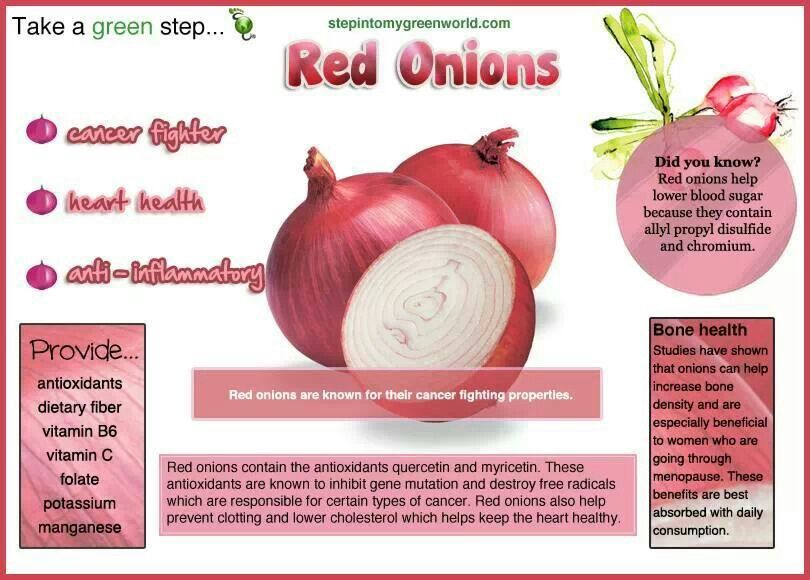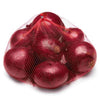Red Onions
- Product Weight: 454 g
- Category: Fresh Fruits & Vegetables, Grocery & Gourmet Foods, Out of Stock, Vegetables

Onions (Allium cepa) are bulb-shaped vegetables that grow underground.
Also known as bulb onions or common onions, they are grown worldwide and closely related to chives, garlic, scallions, shallots, and leeks.
Onions may have several health benefits, mostly due to their high content of antioxidants and sulfur-containing compounds.
They have antioxidant and anti-inflammatory effects and have been linked to a reduced risk of cancer, lower blood sugar levels, and improved bone health.
Commonly used as a flavoring or side dish, onions are a staple food in many cuisines. They can be baked, boiled, grilled, fried, roasted, sautéed, powdered, or eaten raw.
Onions vary in size, shape, and color, but the most common types are white, yellow, and red. The taste ranges from mild and sweet to sharp and spicy, depending on the variety and season.
Onions can also be consumed when immature, before the bulb reaches full size. They are then called scallions, spring onions, or summer onions.
This article tells you everything you need to know about onions.
Raw onions are very low in calories, with only 40 calories per 3.5 ounces (100 grams).
By fresh weight, they are 89% water, 9% carbs, and 1.7% fiber, with tiny amounts of protein and fat.
The main nutrients in 3.5 ounces (100 grams) of raw onions are (1Trusted Source):
- Calories: 40
- Water: 89%
- Protein: 1.1 grams
- Carbs: 9.3 grams
- Sugar: 4.2 grams
- Fiber: 1.7 grams
- Fat: 0.1 grams
Carbs
Carbohydrates make up about 9–10% of both raw and cooked onions.
They consist mostly of simple sugars, such as glucose, fructose, and sucrose, as well as fiber.
A 3.5-ounce (100-gram) portion contains 9.3 grams of carbs and 1.7 grams of fiber, so the total digestible carb content is 7.6 grams.
Fibers
Onions are a decent source of fiber, which accounts for 0.9–2.6% of the fresh weight, depending on the type of onion.
They are very rich in healthy soluble fibers called fructans. In fact, onions are among the main dietary sources of fructans (2Trusted Source, 3).
Fructans are so-called prebiotic fibers, which feed the beneficial bacteria in your gut.
This leads to the formation of short-chain fatty acids (SCFAs), such as butyrate, which may improve colon health, reduce inflammation, and cut your risk of colon cancer (4Trusted Source, 5Trusted Source, 6Trusted Source).
However, fructans are considered FODMAPs, which may cause unpleasant digestive symptoms in sensitive individuals, such as those with irritable bowel syndrome (IBS) (7Trusted Source, 8Trusted Source, 9Trusted Source).
SUMMARYOnions consist mostly of water, carbs, and fiber. Their main fibers, fructans, can feed the friendly bacteria in your gut, though they may cause digestive problems in some people.
Onions contain decent amounts of several vitamins and minerals, including:
- Vitamin C. An antioxidant, this vitamin is needed for immune function and maintenance of skin and hair (10Trusted Source, 11Trusted Source, 12Trusted Source).
- Folate (B9). A water-soluble B vitamin, folate is essential for cell growth and metabolism and especially important for pregnant women (13Trusted Source).
- Vitamin B6. Found in most foods, this vitamin is involved in the formation of red blood cells.
- Potassium. This essential mineral can have blood pressure-lowering effects and is important for heart health (14Trusted Source, 15Trusted Source).
SUMMARYOnions contain decent amounts of vitamin C, folate, vitamin B6, and potassium, which provide a number of benefits.
Onions (Allium cepa) are bulb-shaped vegetables that grow underground.
Also known as bulb onions or common onions, they are grown worldwide and closely related to chives, garlic, scallions, shallots, and leeks.
Onions may have several health benefits, mostly due to their high content of antioxidants and sulfur-containing compounds.
They have antioxidant and anti-inflammatory effects and have been linked to a reduced risk of cancer, lower blood sugar levels, and improved bone health.
Commonly used as a flavoring or side dish, onions are a staple food in many cuisines. They can be baked, boiled, grilled, fried, roasted, sautéed, powdered, or eaten raw.
Onions vary in size, shape, and color, but the most common types are white, yellow, and red. The taste ranges from mild and sweet to sharp and spicy, depending on the variety and season.
Onions can also be consumed when immature, before the bulb reaches full size. They are then called scallions, spring onions, or summer onions.
This article tells you everything you need to know about onions.
Nutrition factsRaw onions are very low in calories, with only 40 calories per 3.5 ounces (100 grams).
By fresh weight, they are 89% water, 9% carbs, and 1.7% fiber, with tiny amounts of protein and fat.
The main nutrients in 3.5 ounces (100 grams) of raw onions are (1Trusted Source):
- Calories: 40
- Water: 89%
- Protein: 1.1 grams
- Carbs: 9.3 grams
- Sugar: 4.2 grams
- Fiber: 1.7 grams
- Fat: 0.1 grams
Carbs
Carbohydrates make up about 9–10% of both raw and cooked onions.
They consist mostly of simple sugars, such as glucose, fructose, and sucrose, as well as fiber.
A 3.5-ounce (100-gram) portion contains 9.3 grams of carbs and 1.7 grams of fiber, so the total digestible carb content is 7.6 grams.
Fibers
Onions are a decent source of fiber, which accounts for 0.9–2.6% of the fresh weight, depending on the type of onion.
They are very rich in healthy soluble fibers called fructans. In fact, onions are among the main dietary sources of fructans (2Trusted Source, 3).
Fructans are so-called prebiotic fibers, which feed the beneficial bacteria in your gut.
This leads to the formation of short-chain fatty acids (SCFAs), such as butyrate, which may improve colon health, reduce inflammation, and cut your risk of colon cancer (4Trusted Source, 5Trusted Source, 6Trusted Source).
However, fructans are considered FODMAPs, which may cause unpleasant digestive symptoms in sensitive individuals, such as those with irritable bowel syndrome (IBS) (7Trusted Source, 8Trusted Source, 9Trusted Source).
SUMMARYVitamins and mineralsOnions consist mostly of water, carbs, and fiber. Their main fibers, fructans, can feed the friendly bacteria in your gut, though they may cause digestive problems in some people.
Onions contain decent amounts of several vitamins and minerals, including:
- Vitamin C. An antioxidant, this vitamin is needed for immune function and maintenance of skin and hair (10Trusted Source, 11Trusted Source, 12Trusted Source).
- Folate (B9). A water-soluble B vitamin, folate is essential for cell growth and metabolism and especially important for pregnant women (13Trusted Source).
- Vitamin B6. Found in most foods, this vitamin is involved in the formation of red blood cells.
- Potassium. This essential mineral can have blood pressure-lowering effects and is important for heart health (14Trusted Source, 15Trusted Source).
SUMMARYOnions contain decent amounts of vitamin C, folate, vitamin B6, and potassium, which provide a number of benefits.



